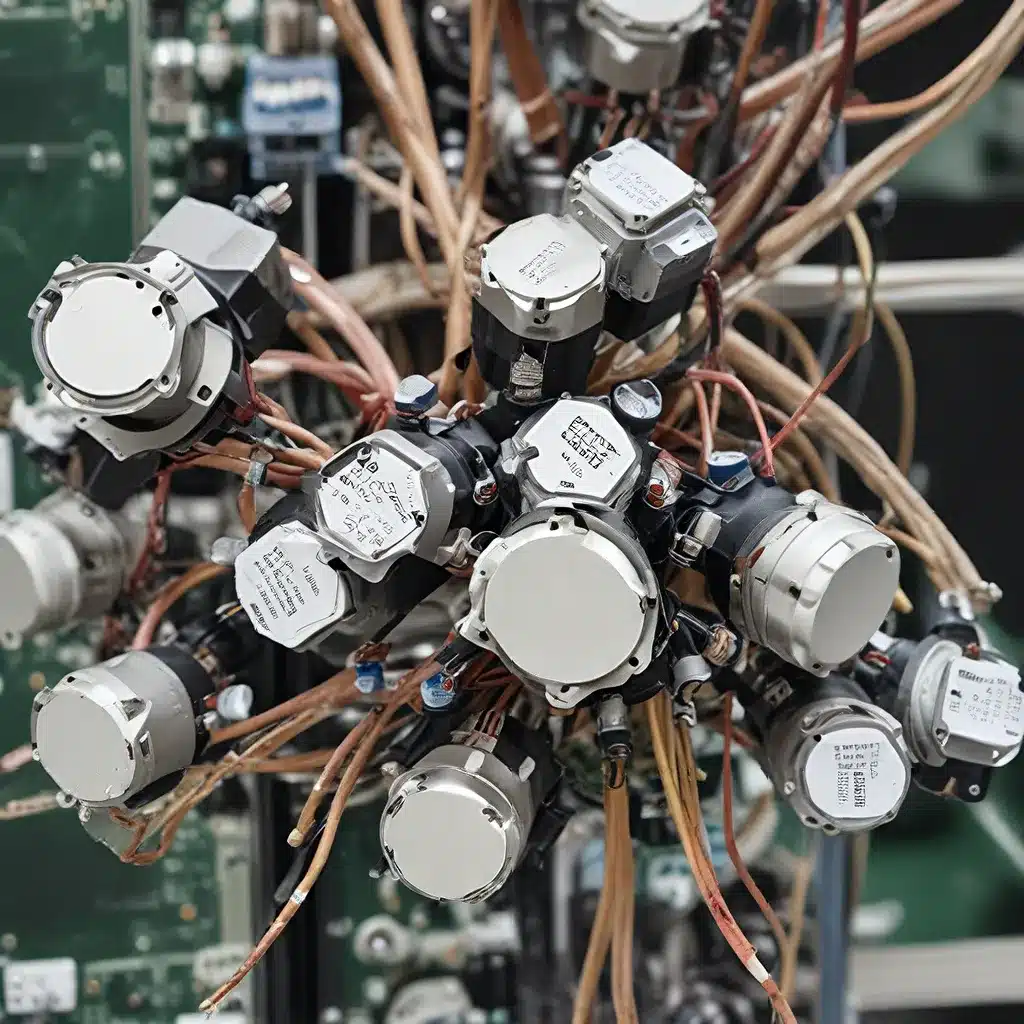
In the rapidly evolving world of sensor networks and the Internet of Things (IoT), energy management has become a critical consideration for ensuring the trustworthiness and sustainability of these distributed systems. As sensor-equipped devices proliferate across various industries, from smart cities to precision agriculture, the need for efficient and reliable power management solutions has never been more pressing.
Navigating the Complexities of Sensor Network Design
At the heart of sensor networks lie the sensor nodes – small, decentralized devices equipped with various sensing capabilities. These nodes are often deployed in vast, geographically dispersed clusters, each responsible for collecting and transmitting data back to a central hub or gateway. Designing an effective sensor network that can optimize energy consumption while maintaining high performance is a delicate balancing act.
One of the key challenges in sensor network design is power management. Sensor nodes are typically powered by battery or energy harvesting systems, which have limited lifespans. Inefficient power usage can lead to premature node failures, disrupting the network’s connectivity and data integrity. Implementing energy-efficient protocols and intelligent power management strategies is crucial to ensuring the long-term viability of sensor networks.
Unlocking the Potential of IoT Applications
The Internet of Things has opened up a world of possibilities for sensor networks, enabling a wide range of innovative applications. From smart homes that optimize energy usage to precision agriculture systems that monitor soil conditions, the integration of sensor data with cloud-based analytics and automation has transformed how we interact with our physical environment.
However, the proliferation of IoT devices has also introduced new security and privacy concerns. Sensor nodes, often deployed in uncontrolled environments, can be vulnerable to cyber attacks, data breaches, and unauthorized access. Ensuring the trustworthiness of sensor networks is crucial to maintaining the integrity and confidentiality of the data they collect and transmit.
Strategies for Trustworthy Energy Management
To address the challenges of sensor network design and IoT security, researchers and industry leaders have developed a range of energy management strategies that prioritize trustworthiness and sustainability. These approaches focus on optimizing power consumption, enhancing device security, and promoting resilience in the face of changing environmental conditions or cyber threats.
Energy-Efficient Protocols and Architectures
One of the primary strategies for energy management in sensor networks involves the implementation of energy-efficient protocols and network architectures. These solutions aim to minimize power consumption at the node level, while also optimizing the overall network topology for efficient data transmission and routing.
| Protocol/Architecture | Description | Energy Efficiency Benefits |
|---|---|---|
| Duty-Cycling Protocols | Sensor nodes alternate between active and sleep modes to reduce power consumption during idle periods. | Significant reduction in overall power usage by minimizing unnecessary node activity. |
| Hierarchical Clustering | Sensor nodes are organized into clusters, with cluster heads responsible for coordinating data aggregation and transmission. | Decreases the number of direct transmissions from nodes to the gateway, reducing energy consumption. |
| Data Compression and Aggregation | Sensor data is processed and compressed before transmission, reducing the amount of data that needs to be sent. | Lowers the overall energy required for data transmission, as less data is being sent over the network. |
Renewable Energy Integration and Energy Harvesting
Another crucial aspect of trustworthy energy management is the integration of renewable energy sources and energy harvesting technologies. By leveraging solar, wind, or vibration-based energy harvesting, sensor nodes can supplement or even replace their battery-powered systems, reducing the need for manual battery replacement and increasing the network’s overall sustainability.
Recent studies have demonstrated the effectiveness of integrating renewable energy sources into sensor networks, leading to significant improvements in energy efficiency and network lifetime.
Secure and Trustworthy Data Management
Security and trustworthiness are paramount in sensor networks, as they are responsible for collecting and transmitting sensitive data. Implementing robust security protocols, encryption mechanisms, and secure communication channels is essential to protecting the integrity and confidentiality of the data generated by sensor nodes.
Researchers have explored various approaches, such as lightweight cryptography, authentication schemes, and anomaly detection, to enhance the security of sensor networks and safeguard against cyber threats.
Resilient and Adaptive Network Architectures
To ensure the long-term reliability and trustworthiness of sensor networks, researchers have developed resilient and adaptive network architectures. These solutions are designed to withstand and recover from failures, network disruptions, and changing environmental conditions, such as battery depletion or node malfunctions.
Strategies like self-healing mechanisms, dynamic reconfiguration, and redundancy have been explored to enhance the robustness of sensor networks and maintain data availability even in the face of unexpected challenges.
Conclusion: Embracing a Sustainable Future for Sensor Networks
As the sensor network and IoT landscape continues to evolve, the need for trustworthy energy management strategies has become increasingly vital. By optimizing power consumption, integrating renewable energy sources, securing data management, and building resilient network architectures, we can unlock the full potential of these distributed systems and pave the way for a more sustainable and connected future.
Explore the latest developments in sensor network design and IoT applications by visiting sensor-networks.org, a leading resource for professionals, researchers, and enthusiasts in the field.